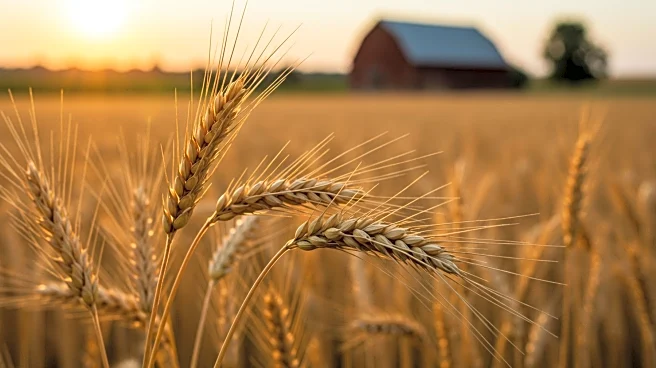What is the story about?
What's Happening?
The U.S. grain markets saw a positive movement on Wednesday, August 13, 2025, with December corn closing at $3.97¼ per bushel, up 2¾¢. November soybeans increased by 11½¢ to $10.44¼ per bushel. The rise in grain prices is attributed to light short covering, particularly in soybeans, as noted by Jamey Kohake, a senior risk manager. Wheat markets showed mixed results, with September CBOT wheat up 2¼¢, while September KC wheat fell by 2¢. The livestock market also saw gains, with October live cattle up 40¢ and September feeder cattle rising by 37¢. The S&P 500 Index and Dow Jones Industrial Average both experienced increases, reflecting broader market optimism.
Why It's Important?
The upward movement in grain prices is significant for U.S. farmers and the agricultural sector, as it may influence planting decisions and financial planning. The increase in soybean prices, driven by short covering, highlights the market's response to potential inventory adjustments. This trend could impact export dynamics and domestic supply chains. The mixed results in wheat markets suggest ongoing volatility, which stakeholders must navigate carefully. The rise in livestock prices indicates positive sentiment in the meat production industry, potentially affecting consumer prices and trade relations.
What's Next?
Market analysts and agricultural stakeholders will continue to monitor grain price trends, especially as crop reports are revised. The potential for further adjustments in soybean stocks could lead to strategic shifts in inventory management. Livestock producers may need to assess market conditions to optimize production and sales strategies. The broader economic indicators, such as the S&P 500 and Dow Jones, will be watched for signs of sustained market confidence.
AI Generated Content
Do you find this article useful?











